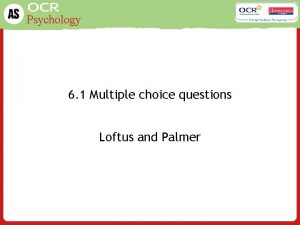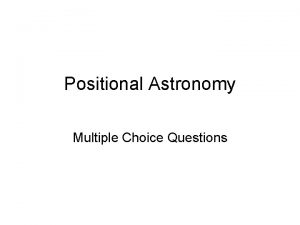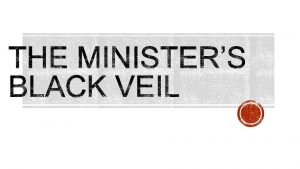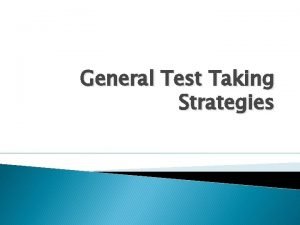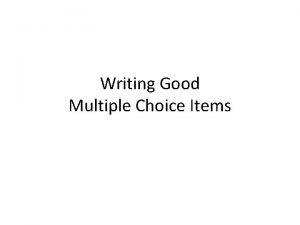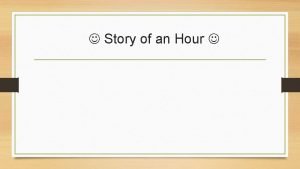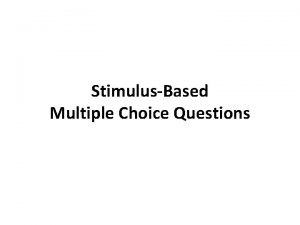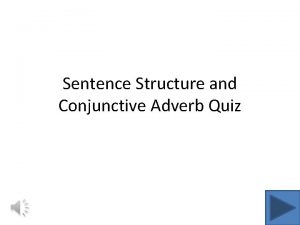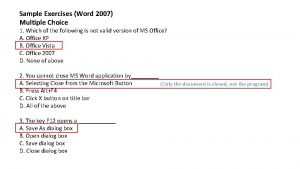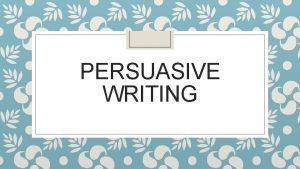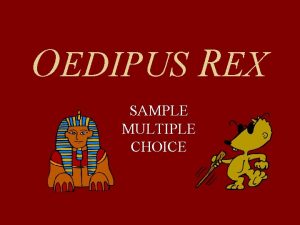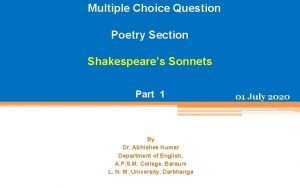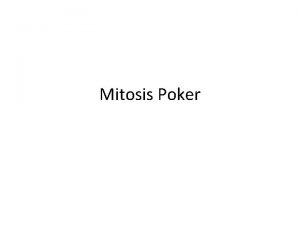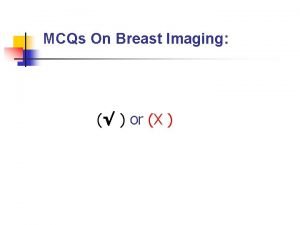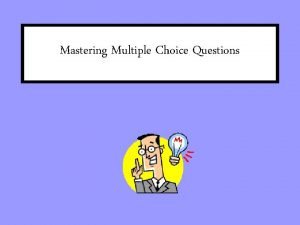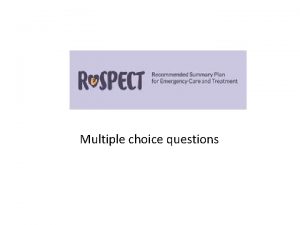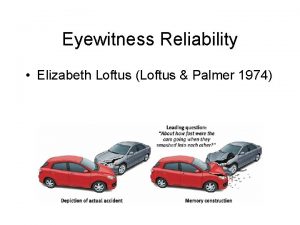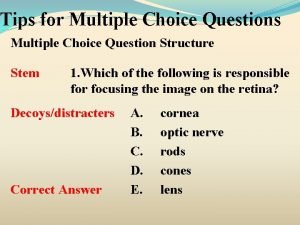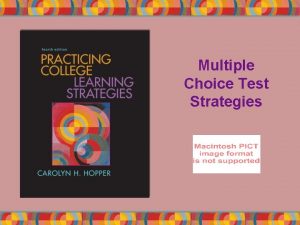Psychology 6 1 Multiple choice questions Loftus and
















- Slides: 16

Psychology 6. 1 Multiple choice questions Loftus and Palmer

Psychology Q 1 Which method was used by Loftus and Palmer? a. field experiment b. natural experiment c. quasi experiment d. laboratory experiment

Psychology Q 2 What was the design used by Loftus and Palmer? a. independent measures design b. matched pairs design c. repeated measures design d. single-subject design

Psychology Q 3 Who were the participants in Experiment 1? a. students b. drivers c. accident witnesses d. accident victims

Psychology Q 4 Which verb was not used in Experiment 1? a. hit b. smashed c. struck d. contacted

Psychology Q 5 What was the dependent variable in Experiment 1? a. number of accidents recalled b. broken glass seen c. estimate of speed d. written account of accident

Psychology Q 6 What was shown to participants in Experiment 1? a. videos of accidents b. film clips of accidents c. photographs of accidents d. CCTV of accidents

Psychology Q 7 Which of the following was a dependent variable in Experiment 2? a. estimate of size of car b. whether broken glass seen c. participants written account of accident d. whether participant passed driving test

Psychology Q 8 Which verb gave the highest speed estimate in Experiment 1? a. bumped b. hit c. collided d. smashed

Psychology Q 9 How many participants were there in Experiment 2? a. 45 b. 15 c. 150 d. 50

Psychology Q 10 Which of these was not a group of participants in Experiment 2? a. control b. ‘hit' c. ‘contacted' d. ‘smashed'

Psychology Q 11 How long was left between showing the films and asking about the broken glass? a. 24 hours b. 1 hour c. 1 week d. 1 month

Psychology Q 12 Which group(s) 'saw' most broken glass? a. ‘smashed' and ‘hit' b. ‘smashed' c. control d. control and ‘hit'

Psychology Q 13 What did Loftus and Palmer conclude about leading questions? a. They can influence memory. b. They have no effect on memory. c. They only effect students. d. They only work with car accidents.

Psychology Q 14 What two types of information affect our memory? a. before and after an event b. before and during an event c. during and after an event d. immediately after and a long time after

Psychology Q 15 What is a leading question? a. A question that leads certain answer. b. A question that leads wrong answer. c. A question that leads right answer. d. A question that leads a person to give a a person to lie.
 Positive psychology multiple choice questions
Positive psychology multiple choice questions Astronomy questions and answers multiple choice
Astronomy questions and answers multiple choice Answer
Answer Dna structure and replication packet answer key
Dna structure and replication packet answer key Multiple choice questions on prokaryotes and eukaryotes
Multiple choice questions on prokaryotes and eukaryotes How to write multiple choice questions
How to write multiple choice questions Merchant of venice act 4 scene 1
Merchant of venice act 4 scene 1 The story of an hour selection test
The story of an hour selection test What is stimulus in mcq
What is stimulus in mcq Conjunctive adverb quiz
Conjunctive adverb quiz How to create multiple choice questions in word 2007
How to create multiple choice questions in word 2007 Multiple choice questions for primary students
Multiple choice questions for primary students Persuasive writing mcqs with answers pdf
Persuasive writing mcqs with answers pdf Oedipus rex practice multiple choice questions answers
Oedipus rex practice multiple choice questions answers Multiple choice questions on shakespeare sonnets
Multiple choice questions on shakespeare sonnets In figure 10-4 what role does structure a play in mitosis
In figure 10-4 what role does structure a play in mitosis Mcq breast anatomy
Mcq breast anatomy
